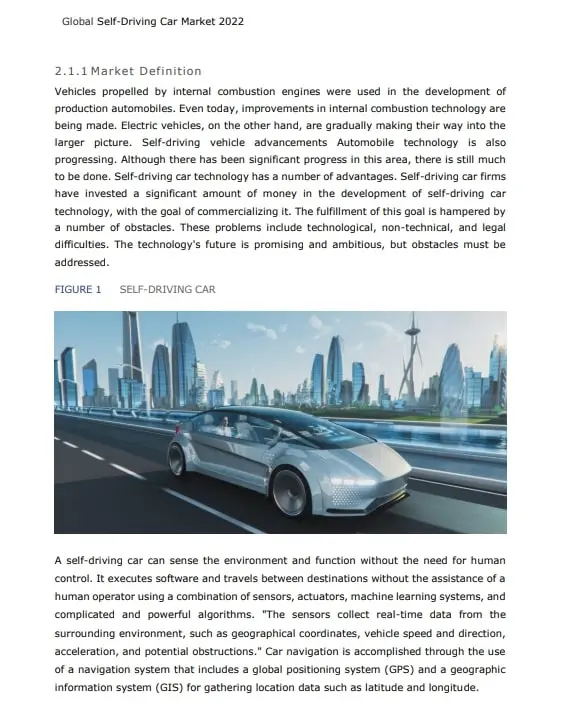- +1 551 333 1547
- +44 2070 979277
- live:skype_chat
About Military Drone-
Military drones, commonly referred to as unmanned aerial vehicles (UAVs), are aircraft that can be controlled either remotely or autonomously, meaning that there is no human pilot on board. Armed forces of all countries around the world employ these drones for surveillance, reconnaissance, combat, and logistics missions. Military drones have become a significant part of modern military operations because they allow missions to be carried out in hostile environments without risking human life. Military drones come in an assortment of sizes. They vary from small, lightweight models used for tactical reconnaissance to larger, more advanced systems capable of delivering payloads or performing long-duration surveillance. Fitted with high-resolution cameras, sensors, and advanced communication systems, armed drones can give real-time intelligence and target tracking and thus are crucial assets in gathering information in conflict zones. Many military drones are already abreast with precision-guided munitions; therefore, these can strike with minimal collateral damage. Modern warfare was revolutionized through these options, enabling targeted operations such as not having to use much manpower or deploy many manned aircrafts on the ground. Besides their combat and surveillance roles, the military drones are used for logistics or dropping supplies in places where troops cannot easily access them; they demonstrate the significant versatility or cost-effectiveness and operations in dangerous environments with military drones as an essential tool for the modern armed forces. | Attributes | Details |
|---|---|
| Study Period | 2020-2032 |
| Base Year | 2024 |
| Unit | Value (USD Million) |
The companies are exploring the market by adopting mergers & acquisitions, expansions, investments, new service launches and collaborations as their preferred strategies. The players are exploring new geographies through expansions and acquisitions to avail a competitive advantage through combined synergies. Established and emerging Manufacturers should take a closer view at their existing organizations and reinvent traditional business and operating models to adapt to the future.
Thales (France), Saab (Sweden), BAE Systems (UK), Parrot Drone SAS (France), TERRA DRONE CORPORATION (Japan), Azur Drones (France), Wingtra (Switzerland), AltiGator (France), Boeing (United States), AAI Corporation – Textron Systems (United States) and Aeryon Labs Inc. (Canada) are some of the key players that are part of study coverage.
Segmentation Overview
AMA Research has segmented the market of Europe Military Drone- market by Type (Fixed-Wing, Rotary-Wing and Hybrid/Transitional), Application (Package Delivery, Aerial Photographing, Security, Surveying and Mapping, Search and Rescue, Unmanned Cargo System and Fire Fighting) and Region. On the basis of geography, the market of Military Drone- has been segmented into
Influencing Trend:
Growing Use of Military Drones in Life-Threatening Military Missions and Rising Preference for Modern Warfare TechniquesMarket Growth Drivers:
High Adoption due to Use in Defense Forces as Loitering Munition and Upsurging Use of Drones to Combat TerrorismChallenges:
Lack of Skilled and Trained Personnel for Operating Military DronesRestraints:
Rising Issues with the Safety and Security of Drones and Political and Social Acceptability of Military DronesOpportunities:
Growing Defense Expenditure of Emerging Countries, Technological Developments in the Field of Drone Payloads and High Adoption Due to Use of Uavs for Cargo Delivery in Military OperationsIn October 2024, The South Korean Agency for Defense Development (ADD), in collaboration with Hanwha Aerospace, presented the Drone Multiple Launcher. This system is designed to modularize launch sites, featuring multiple launching pads capable of deploying several small-sized drones and rail-type launchpads for medium-sized drones.
The Federal Aviation Administration (FAA) is using its existing authority under Title 14 of the Code of Federal Regulations (14 CFR). “Special Security Instructions” – to address national security concerns about unauthorized drone operations over 133 military facilities. The FAA and the Department of Defense have agreed to restrict drone flights up to 400 feet within the lateral boundaries of these 133 facilities. The restrictions will be effective April 14, 2017. There are only a few exceptions that permit drone flights within these restrictions, and they must be coordinated with the individual facility and/or the FAA.
Key Target Audience
Manufactures, Suppliers and Distributors, Automotive Industry, Government Regulatory Bodies, Private and Government Research Organizations and OthersAbout Approach
To evaluate and validate the market size various sources including primary and secondary analysis is utilized. AMA Research follows regulatory standards such as NAICS/SIC/ICB/TRCB, to have a better understanding of the market. The market study is conducted on basis of more than 200 companies dealing in the market regional as well as global areas with the purpose to understand the companies positioning regarding the market value, volume, and their market share for regional as well as global. Further to bring relevance specific to any niche market we set and apply a number of criteria like Geographic Footprints, Regional Segments of Revenue, Operational Centres, etc. The next step is to finalize a team (In-House + Data Agencies) who then starts collecting C & D level executives and profiles, Industry experts, Opinion leaders, etc., and work towards appointment generation.
The primary research is performed by taking the interviews of executives of various companies dealing in the market as well as using the survey reports, research institute, and latest research reports. Meanwhile, the analyst team keeps preparing a set of questionnaires, and after getting the appointee list; the target audience is then tapped and segregated with various mediums and channels that are feasible for making connections that including email communication, telephonic, skype, LinkedIn Group & InMail, Community Forums, Community Forums, open Survey, SurveyMonkey, etc.
Report Objectives / Segmentation Covered
By Type
- Fixed-Wing
- Rotary-Wing
- Hybrid/Transitional
By Application
- Package Delivery
- Aerial Photographing
- Security
- Surveying and Mapping
- Search and Rescue
- Unmanned Cargo System
- Fire Fighting
By Propulsion type
- Battery Powered
- Fuel Cell
- Hybrid Cell
By Range
- Visual Line of Sight (VLOS)
- Extended Visual Line of Sight (EVLOS)
- Beyond Line of Sight (BLOS)
By Launching Mode
- Vertical Take-Off
- Automatic Take-Off and Landing
- Catapult Launcher
- Hand Launched
By Regions
- 1. Market Overview
- 1.1. Introduction
- 1.2. Scope/Objective of the Study
- 1.2.1. Research Objective
- 2. Executive Summary
- 2.1. Introduction
- 3. Market Dynamics
- 3.1. Introduction
- 3.2. Market Drivers
- 3.2.1. High Adoption due to Use in Defense Forces as Loitering Munition
- 3.2.2. Upsurging Use of Drones to Combat Terrorism
- 3.3. Market Challenges
- 3.3.1. Lack of Skilled and Trained Personnel for Operating Military Drones
- 3.4. Market Trends
- 3.4.1. Growing Use of Military Drones in Life-Threatening Military Missions
- 3.4.2. Rising Preference for Modern Warfare Techniques
- 4. Market Factor Analysis
- 4.1. Porters Five Forces
- 4.2. Supply/Value Chain
- 4.3. PESTEL analysis
- 4.4. Market Entropy
- 4.5. Patent/Trademark Analysis
- 5. Europe Military Drone-, by Type, Application, Propulsion type, Range and Launching Mode (value) (2019-2024)
- 5.1. Introduction
- 5.2. Europe Military Drone- (Value)
- 5.2.1. Europe Military Drone- by: Type (Value)
- 5.2.1.1. Fixed-Wing
- 5.2.1.2. Rotary-Wing
- 5.2.1.3. Hybrid/Transitional
- 5.2.2. Europe Military Drone- by: Application (Value)
- 5.2.2.1. Package Delivery
- 5.2.2.2. Aerial Photographing
- 5.2.2.3. Security
- 5.2.2.4. Surveying and Mapping
- 5.2.2.5. Search and Rescue
- 5.2.2.6. Unmanned Cargo System
- 5.2.2.7. Fire Fighting
- 5.2.3. Europe Military Drone- by: Propulsion type (Value)
- 5.2.3.1. Battery Powered
- 5.2.3.2. Fuel Cell
- 5.2.3.3. Hybrid Cell
- 5.2.4. Europe Military Drone- by: Range (Value)
- 5.2.4.1. Visual Line of Sight (VLOS)
- 5.2.4.2. Extended Visual Line of Sight (EVLOS)
- 5.2.4.3. Beyond Line of Sight (BLOS)
- 5.2.5. Europe Military Drone- by: Launching Mode (Value)
- 5.2.5.1. Vertical Take-Off
- 5.2.5.2. Automatic Take-Off and Landing
- 5.2.5.3. Catapult Launcher
- 5.2.5.4. Hand Launched
- 5.2.1. Europe Military Drone- by: Type (Value)
- 6. Military Drone-: Manufacturers/Players Analysis
- 6.1. Competitive Landscape
- 6.1.1. Market Share Analysis
- 6.1.1.1. Top 3
- 6.1.1.2. Top 5
- 6.1.1. Market Share Analysis
- 6.2. Peer Group Analysis (2024)
- 6.3. BCG Matrix
- 6.4. Company Profile
- 6.4.1. Thales (France)
- 6.4.1.1. Business Overview
- 6.4.1.2. Products/Services Offerings
- 6.4.1.3. Financial Analysis
- 6.4.1.4. SWOT Analysis
- 6.4.2. Saab (Sweden)
- 6.4.2.1. Business Overview
- 6.4.2.2. Products/Services Offerings
- 6.4.2.3. Financial Analysis
- 6.4.2.4. SWOT Analysis
- 6.4.3. BAE Systems (UK)
- 6.4.3.1. Business Overview
- 6.4.3.2. Products/Services Offerings
- 6.4.3.3. Financial Analysis
- 6.4.3.4. SWOT Analysis
- 6.4.4. Parrot Drone SAS (France)
- 6.4.4.1. Business Overview
- 6.4.4.2. Products/Services Offerings
- 6.4.4.3. Financial Analysis
- 6.4.4.4. SWOT Analysis
- 6.4.5. TERRA DRONE CORPORATION (Japan)
- 6.4.5.1. Business Overview
- 6.4.5.2. Products/Services Offerings
- 6.4.5.3. Financial Analysis
- 6.4.5.4. SWOT Analysis
- 6.4.6. Azur Drones (France)
- 6.4.6.1. Business Overview
- 6.4.6.2. Products/Services Offerings
- 6.4.6.3. Financial Analysis
- 6.4.6.4. SWOT Analysis
- 6.4.7. Wingtra (Switzerland)
- 6.4.7.1. Business Overview
- 6.4.7.2. Products/Services Offerings
- 6.4.7.3. Financial Analysis
- 6.4.7.4. SWOT Analysis
- 6.4.8. AltiGator (France)
- 6.4.8.1. Business Overview
- 6.4.8.2. Products/Services Offerings
- 6.4.8.3. Financial Analysis
- 6.4.8.4. SWOT Analysis
- 6.4.9. Boeing (United States)
- 6.4.9.1. Business Overview
- 6.4.9.2. Products/Services Offerings
- 6.4.9.3. Financial Analysis
- 6.4.9.4. SWOT Analysis
- 6.4.10. AAI Corporation – Textron Systems (United States)
- 6.4.10.1. Business Overview
- 6.4.10.2. Products/Services Offerings
- 6.4.10.3. Financial Analysis
- 6.4.10.4. SWOT Analysis
- 6.4.11. Aeryon Labs Inc. (Canada)
- 6.4.11.1. Business Overview
- 6.4.11.2. Products/Services Offerings
- 6.4.11.3. Financial Analysis
- 6.4.11.4. SWOT Analysis
- 6.4.1. Thales (France)
- 6.1. Competitive Landscape
- 7. Europe Military Drone- Sale, by Type, Application, Propulsion type, Range and Launching Mode (value) (2027-2032)
- 7.1. Introduction
- 7.2. Europe Military Drone- (Value)
- 7.2.1. Europe Military Drone- by: Type (Value)
- 7.2.1.1. Fixed-Wing
- 7.2.1.2. Rotary-Wing
- 7.2.1.3. Hybrid/Transitional
- 7.2.2. Europe Military Drone- by: Application (Value)
- 7.2.2.1. Package Delivery
- 7.2.2.2. Aerial Photographing
- 7.2.2.3. Security
- 7.2.2.4. Surveying and Mapping
- 7.2.2.5. Search and Rescue
- 7.2.2.6. Unmanned Cargo System
- 7.2.2.7. Fire Fighting
- 7.2.3. Europe Military Drone- by: Propulsion type (Value)
- 7.2.3.1. Battery Powered
- 7.2.3.2. Fuel Cell
- 7.2.3.3. Hybrid Cell
- 7.2.4. Europe Military Drone- by: Range (Value)
- 7.2.4.1. Visual Line of Sight (VLOS)
- 7.2.4.2. Extended Visual Line of Sight (EVLOS)
- 7.2.4.3. Beyond Line of Sight (BLOS)
- 7.2.5. Europe Military Drone- by: Launching Mode (Value)
- 7.2.5.1. Vertical Take-Off
- 7.2.5.2. Automatic Take-Off and Landing
- 7.2.5.3. Catapult Launcher
- 7.2.5.4. Hand Launched
- 7.2.1. Europe Military Drone- by: Type (Value)
- 8. Appendix
- 8.1. Acronyms
- 9. Methodology and Data Source
- 9.1. Methodology/Research Approach
- 9.1.1. Research Programs/Design
- 9.1.2. Market Size Estimation
- 9.1.3. Market Breakdown and Data Triangulation
- 9.2. Data Source
- 9.2.1. Secondary Sources
- 9.2.2. Primary Sources
- 9.3. Disclaimer
- 9.1. Methodology/Research Approach
List of Tables
- Table 1. Military Drone-: by Type(USD Million)
- Table 2. Military Drone-: by Application(USD Million)
- Table 3. Military Drone-: by Propulsion type(USD Million)
- Table 4. Military Drone-: by Range(USD Million)
- Table 5. Military Drone-: by Launching Mode(USD Million)
- Table 6. Company Basic Information, Sales Area and Its Competitors
- Table 7. Company Basic Information, Sales Area and Its Competitors
- Table 8. Company Basic Information, Sales Area and Its Competitors
- Table 9. Company Basic Information, Sales Area and Its Competitors
- Table 10. Company Basic Information, Sales Area and Its Competitors
- Table 11. Company Basic Information, Sales Area and Its Competitors
- Table 12. Company Basic Information, Sales Area and Its Competitors
- Table 13. Company Basic Information, Sales Area and Its Competitors
- Table 14. Company Basic Information, Sales Area and Its Competitors
- Table 15. Company Basic Information, Sales Area and Its Competitors
- Table 16. Company Basic Information, Sales Area and Its Competitors
- Table 17. Military Drone-: by Type(USD Million)
- Table 18. Military Drone-: by Application(USD Million)
- Table 19. Military Drone-: by Propulsion type(USD Million)
- Table 20. Military Drone-: by Range(USD Million)
- Table 21. Military Drone-: by Launching Mode(USD Million)
- Table 22. Research Programs/Design for This Report
- Table 23. Key Data Information from Secondary Sources
- Table 24. Key Data Information from Primary Sources
List of Figures
- Figure 1. Porters Five Forces
- Figure 2. Supply/Value Chain
- Figure 3. PESTEL analysis
- Figure 4. Europe Military Drone-: by Type USD Million (2019-2024)
- Figure 5. Europe Military Drone-: by Application USD Million (2019-2024)
- Figure 6. Europe Military Drone-: by Propulsion type USD Million (2019-2024)
- Figure 7. Europe Military Drone-: by Range USD Million (2019-2024)
- Figure 8. Europe Military Drone-: by Launching Mode USD Million (2019-2024)
- Figure 9. Europe Military Drone- share by Players 2024 (%)
- Figure 10. Europe Military Drone- share by Players (Top 3) 2024(%)
- Figure 11. Europe Military Drone- share by Players (Top 5) 2024(%)
- Figure 12. BCG Matrix for key Companies
- Figure 13. Thales (France) Revenue, Net Income and Gross profit
- Figure 14. Thales (France) Revenue: by Geography 2024
- Figure 15. Saab (Sweden) Revenue, Net Income and Gross profit
- Figure 16. Saab (Sweden) Revenue: by Geography 2024
- Figure 17. BAE Systems (UK) Revenue, Net Income and Gross profit
- Figure 18. BAE Systems (UK) Revenue: by Geography 2024
- Figure 19. Parrot Drone SAS (France) Revenue, Net Income and Gross profit
- Figure 20. Parrot Drone SAS (France) Revenue: by Geography 2024
- Figure 21. TERRA DRONE CORPORATION (Japan) Revenue, Net Income and Gross profit
- Figure 22. TERRA DRONE CORPORATION (Japan) Revenue: by Geography 2024
- Figure 23. Azur Drones (France) Revenue, Net Income and Gross profit
- Figure 24. Azur Drones (France) Revenue: by Geography 2024
- Figure 25. Wingtra (Switzerland) Revenue, Net Income and Gross profit
- Figure 26. Wingtra (Switzerland) Revenue: by Geography 2024
- Figure 27. AltiGator (France) Revenue, Net Income and Gross profit
- Figure 28. AltiGator (France) Revenue: by Geography 2024
- Figure 29. Boeing (United States) Revenue, Net Income and Gross profit
- Figure 30. Boeing (United States) Revenue: by Geography 2024
- Figure 31. AAI Corporation – Textron Systems (United States) Revenue, Net Income and Gross profit
- Figure 32. AAI Corporation – Textron Systems (United States) Revenue: by Geography 2024
- Figure 33. Aeryon Labs Inc. (Canada) Revenue, Net Income and Gross profit
- Figure 34. Aeryon Labs Inc. (Canada) Revenue: by Geography 2024
- Figure 35. Europe Military Drone-: by Type USD Million (2027-2032)
- Figure 36. Europe Military Drone-: by Application USD Million (2027-2032)
- Figure 37. Europe Military Drone-: by Propulsion type USD Million (2027-2032)
- Figure 38. Europe Military Drone-: by Range USD Million (2027-2032)
- Figure 39. Europe Military Drone-: by Launching Mode USD Million (2027-2032)
List of companies from research coverage that are profiled in the study
- Thales (France)
- Saab (Sweden)
- BAE Systems (UK)
- Parrot Drone SAS (France)
- TERRA DRONE CORPORATION (Japan)
- Azur Drones (France)
- Wingtra (Switzerland)
- AltiGator (France)
- Boeing (United States)
- AAI Corporation – Textron Systems (United States)
- Aeryon Labs Inc. (Canada)
Select User Access Type
Key Highlights of Report
Feb 2025
224 Pages
82 Tables
Base Year: 2024
Coverage: 15+ Companies; 18 Countries
Request Sample Pages
Budget constraints? Get in touch with us for special pricing
Check Discount NowTalk to Our Experts
Want to Customize Study?
"We employ Market statistics, Industry benchmarking, Patent analysis, and Technological Insights to derive requirements and provide customize scope of work."
Frequently Asked Questions (FAQ):
The standard version of the report profiles players such as Thales (France), Saab (Sweden), BAE Systems (UK), Parrot Drone SAS (France), TERRA DRONE CORPORATION (Japan), Azur Drones (France), Wingtra (Switzerland), AltiGator (France), Boeing (United States), AAI Corporation – Textron Systems (United States) and Aeryon Labs Inc. (Canada) etc.
The Study can be customized subject to feasibility and data availability. Please connect with our sales representative for further information.
"Growing Use of Military Drones in Life-Threatening Military Missions
" is seen as one of major influencing trends for Military Drone- Market during projected period 2024-2032.
The Military Drone- market study includes a random mix of players, including both market leaders and some top growing emerging players. Connect with our sales executive to get a complete company list in our research coverage.



